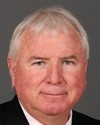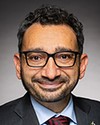I'm not sure I fully understand the question, Mr. Chairman. I'll give a very quick answer.
It's all out of the same pot. The army is only so big, the navy is only so big, the air force is only so big. You can't use them interchangeably. Taking a fighter pilot and putting him into a foxhole in Afghanistan might cause me some humour, but it doesn't really solve the problem. They have different skills. A large part of the load, just by the very nature of the task, falls on the army. The navy and air force can support a tremendous amount, and they are doing more and more in that regard. You're starting to see pilots and naval officers on provincial reconstruction teams and things like that. It's a positive move. That's using what we have as much we can. But the load is on the army.
My personal view is that it's a 5:1 ratio. Five plus one equals six, which means one six-month tour out of every three. So you take the army, and you can deploy one-sixth of it at any one time. You say, well, why can't you do more than that? You can, but what is a sustainable limit? Bear in mind that they have to spend a significant amount of time when they come out of the mission just decompressing and getting over the mission, and then they have to start training to go on the next one. The minimum is six months in both of those cycles. Given weather conditions and all the other tasks, it's probably more.
When we're talking about 2,500 troops in Afghanistan--add up all the missions and call it, in round figures, 3,000--my quick math says we're talking about 18,000 field force troops, and the total number of field force troops in the Canadian army is about 12,000.





